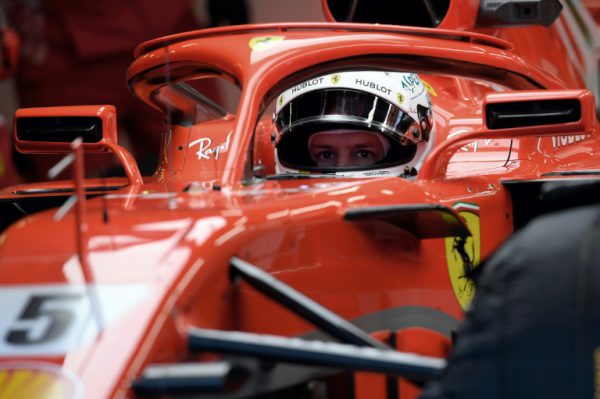Technical regulation changes for the 2018 F1 season
Despite protests from some teams, each driver will still be allowed four power units per season.
Changes to the technical and sporting regulations for the 2018 Formula One season are considerably fewer than last year.

Ferrari’s Sebastian Vettel peers out of his cockpit through the halo at pre-season testing
We list some of the most significant issues.
Aerodynamics
This year we will no longer have to suffer one of the ugliest additions to an F1 car seen in many a year, the so called “shark fin”.
The fin was an integral part of the engine cover and certainly did nothing for the car’s aesthetics. Along with the fin, the T-wing will also no longer be permitted. Also gone at the back end of the car is the crash wing, better known as the “monkey seat” which used to sit below the rear wing.
It was believed that this appendage was being abused by some teams, diverting exhaust gases over the rear wing.
The exhaust exit has also been positioned further back. The halo has introduced aerodynamic changes, while increasing the overall mass of the car and driver from 728 to 733 kg.
Apart from the mass of the halo, considerable reinforcement was required to ensure its structural integrity.
Power Units
The power unit consists of the Internal Combustion Engine (ICE) – a 1.6 litre V6 – the turbocharger, motor generator unit-kinetic (MGU-K), motor generator unitheat (MGU-H), battery and control electronics.
Despite protests from the teams, the FIA has refused to reconsider the reduction of the number of power units from four per driver last season to three per diver in 2018.
The ICE reduction includes the turbocharger and the MGU-H whereas the MGU-K, the battery and control electronics are reduced to two per driver per season.
Safety
Safety is always a priority and the introduction of the halo is an example. Incorporating the device into the monocoque has created many engineering problems and increased the mass of the car.
Driver escape time has been adjusted.
Seven seconds is now allowed to leave the cockpit and 12 seconds for escape and replacing the steering wheel.
Frontal crash test standards will also be higher with the objective of improving the protection against carbon elements breaking through the chassis.
Wheel tethers are increased from two to three per wheel to prevent flying wheels and wheel nuts.
Suspension
Wheel tethers are increased from two to three per wheel to prevent flying wheels and wheel nuts.
Tyres
Pirelli remain the official tyre suppliers for 2018 and have increased the available dry weather range from five to seven variants. They have also introduced a superhard and a hypersoft option.
The side wall colour designations are as follows: Hypersoft – Pink Ultrasoft – Purple Supersoft – Red Soft – Yellow Medium – White Hard – Blue Superhard – Orange.
Pirelli will supply three dry weather compounds per race and intermediates and full wet weather tyres when required.
//







